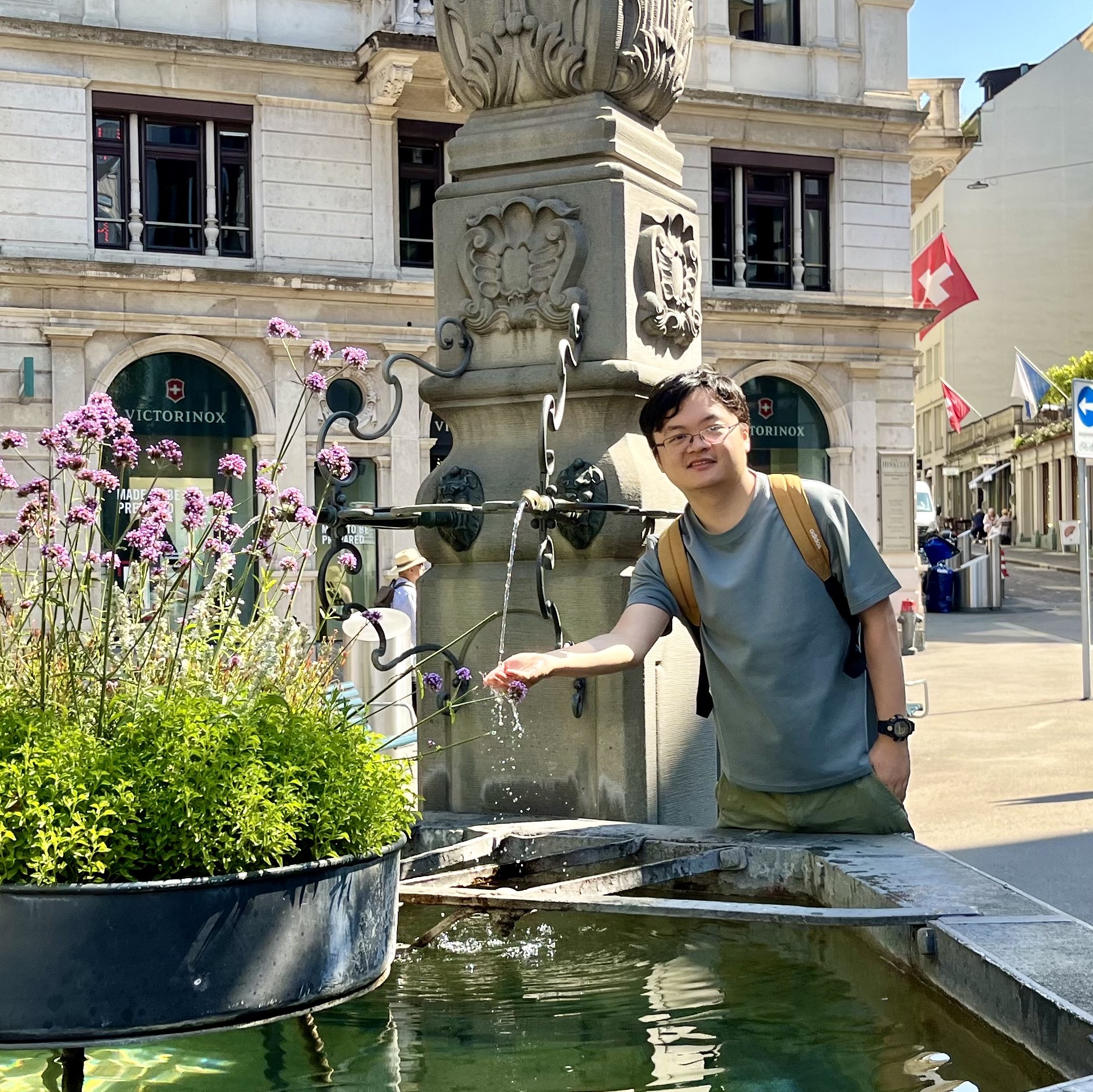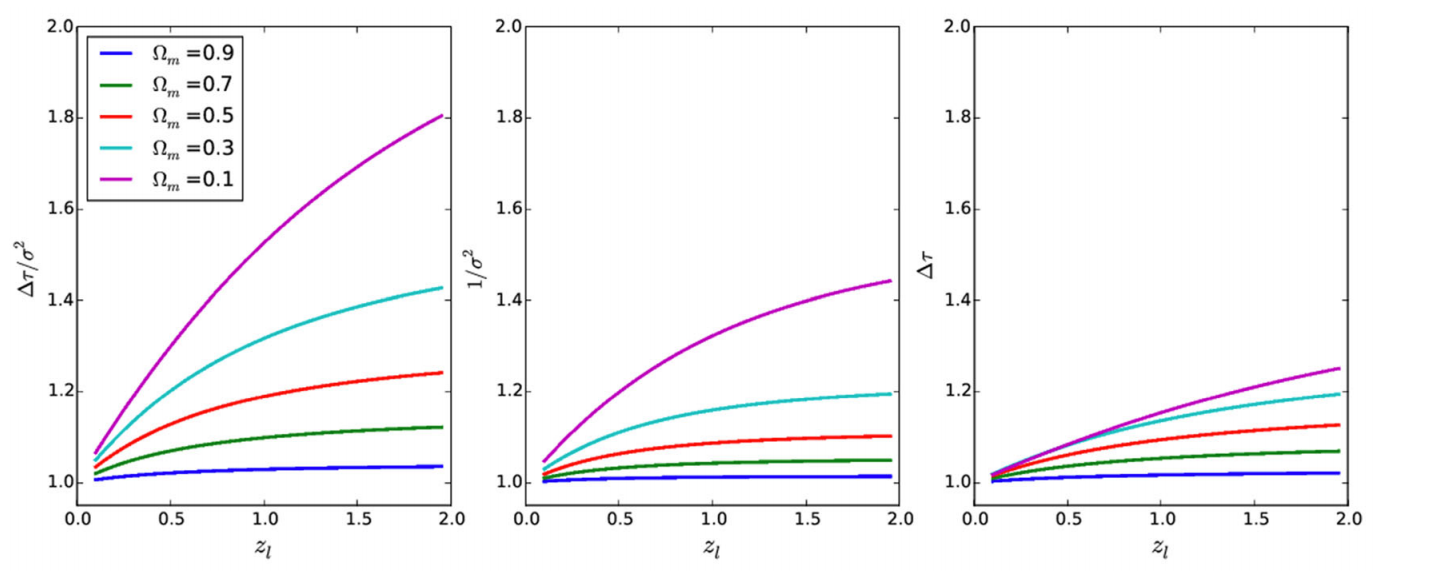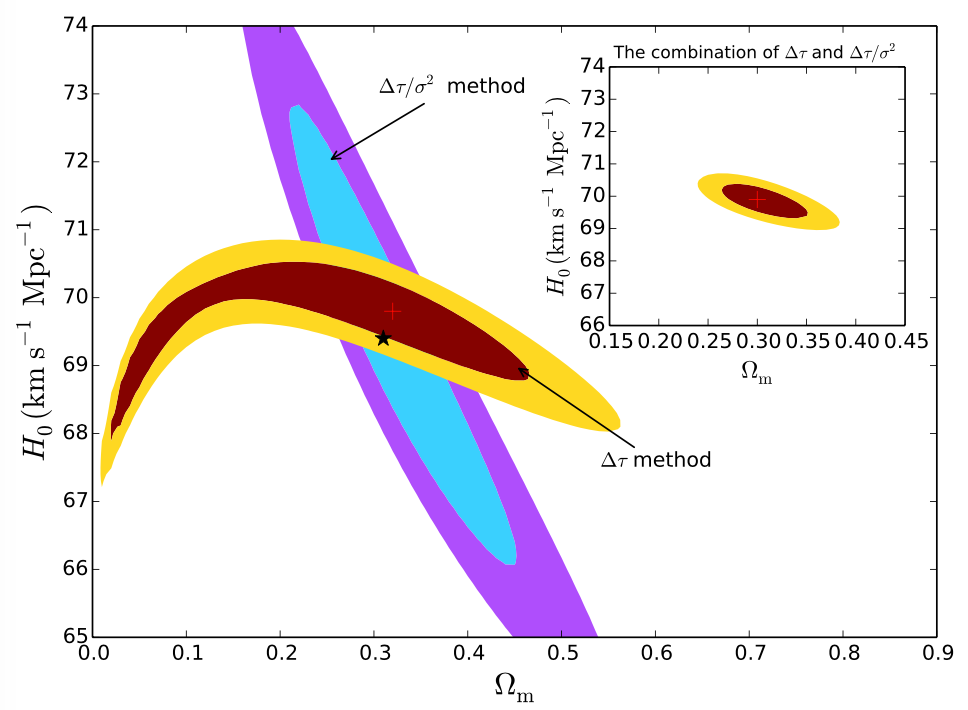
Chengchao Yuan
袁成超
Home
CV
Publications
Talks & Events
Gallery
Contact
“即物而穷其理”
-- 朱熹
“Wir müssen wissen.
Wir werden wissen.”
-- David Hilbert

Research project
<back>
Cosmological test using strong gravitational lensing systems
The full paper
Highlights
(My first research project.)
One of the most intriguing predictions from Einstein’s general relativity is that the light can be bent around a massive object. In the cosmological distances, strong gravitational lensing occurs when the bending effect is strong enough to produce mutiple images of the source. The temporal and geometric properties (e.g. the time delay and the velocity disperson of the lens galaxy) of the image encodes the information of the angular diameter distances between observer, lens and source. In this case, we can use such lensing systems a a probe of the universe and constrain the cosmological parameters that determines the cosmological distance.
In this work, instead of treating the time delay and velocity disperson as independent probes, we find that the combined quantity
(time delay)/(velocity disperson)^2 is more sensitive for different cosmological models, as illustrated in the figure below, where z_l is the redshift of lens galaxy.
 Fig 1 from Yuan & Wang (2015): sensitivity of three methods in constraining the cosmological parameters in ΛCDM universe.
Fig 1 from Yuan & Wang (2015): sensitivity of three methods in constraining the cosmological parameters in ΛCDM universe.
Moreover, we use Monte Carlo simulations to make one-on-one comparisons between ΛCDM universe and Rh = ct universe. We find that our new probe can be more efficient for model selections. In particlar, less lensing systems are required to exclude another model with 3σ significance if one model is assumed as the background. In addition, the joint consideration of our new probe and the time delay information will lead to a more stringent constraint on Hubble constant and Ωm simultaneously (See the figure below).
 Fig 6 from Yuan & Wang (2015): the 2σ and 3σ constraints for ΛCDM model on the Ωm–H0 plane for both τ and τ/σ2 methods
Fig 6 from Yuan & Wang (2015): the 2σ and 3σ constraints for ΛCDM model on the Ωm–H0 plane for both τ and τ/σ2 methods